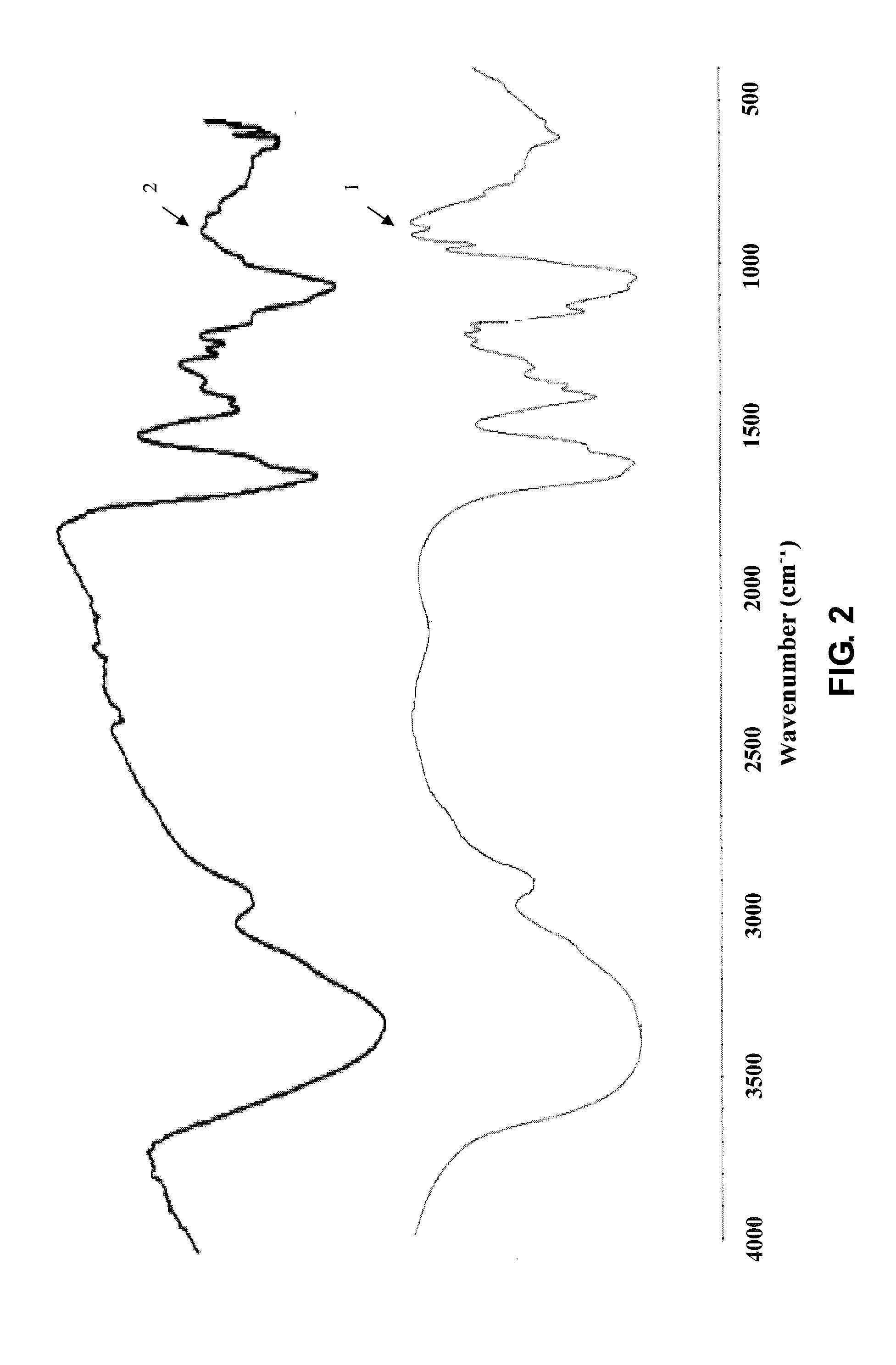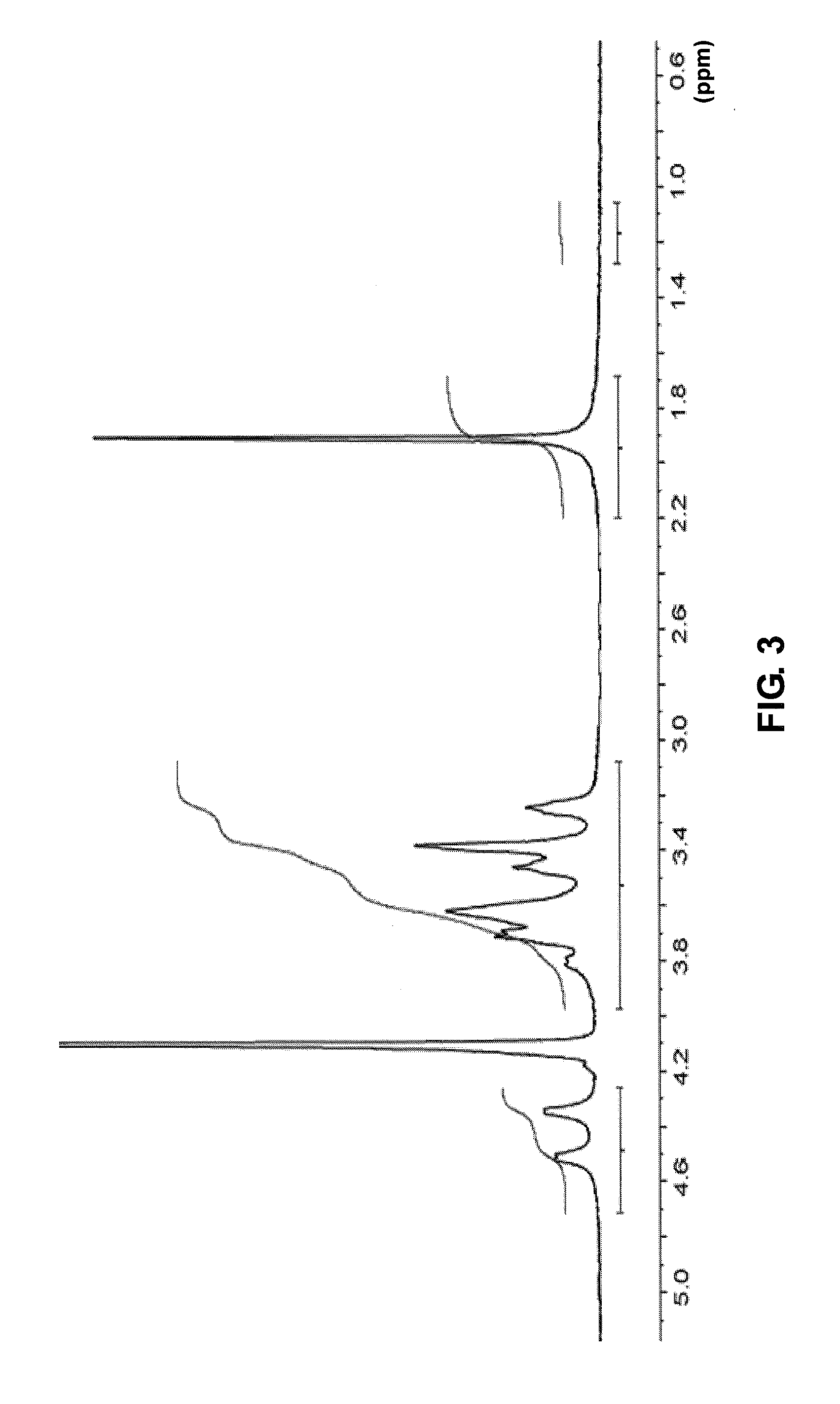Cross-linked sodium hyaluronate gel for tissue filler for plastic surgery and preparation method thereof
a tissue filler and sodium hyaluronate technology, applied in the field of plastic surgery tissue filler, can solve the problems of short derivative resistance, short vivo retention time, etc., and achieve the effect of not decreasing the degree of gel swelling, prolonging the stay in the body, and improving the long-acting stability
- Summary
- Abstract
- Description
- Claims
- Application Information
AI Technical Summary
Benefits of technology
Problems solved by technology
Method used
Image
Examples
example 1
Preparation of Cross-Linked Sodium Hyaluronate Gel for Tissue Filler for Plastic Surgery
[0027]Specific steps are as follows:
[0028]① After 10 g of dry powder of sodium hyaluronate (average molecular weight of 2,000,000) is dissolved in a mixture of 200 ml of 0.5M sodium hydroxide solution and 50 ml of dimethyl sulfoxide to get alkaline solution of sodium hyaluronate, and then added with 0.5 ml of long-chain alkane containing epoxy group- 1,2-epoxy dodecane (molecular weight: 184.32, purity: 98%, Sigma) and 1 ml cross-linking agent containing epoxy group-1,4-butanediol diglycidyl ether (molecular weight: 202.25, purity: 98%, Sigma), heated to 40° C. at the stirring state and kept warm 5 hours, cooled down to the room temperature (15° C.˜30° C.); then add dropwise acetone until appearing white powder and forming a solid-liquid mixing material while stirring (800 ml of volume of acetone added), add 5M hydrochloric acid to adjust the pH value of solid-liquid mixing material to 7. After t...
example 2-example 7
Preparation of Cross-Linked Sodium Hyaluronate Gel for Tissue Filler for Plastic Surgery
[0033]Specific steps are basically the same as those in the Example 1, with the differences as follows: in the step ① in example 1, the feeding quantity and the molar ratio of sodium hyaluronate:1,4-butanediol diglycidyl ether:1,2-epoxy dodecane are as shown in Table 1, to get the cross-linked sodium hyaluronate gel with different consumption of 1,4-butanediol diglycidyl ether and 1,2-epoxy dodecane.
TABLE 1The molar ratio ofFeeding Quantitysodium hyaluronate:BDDE:1,sodium1,4-butanediol diglycidyl1,2-epoxyExample2-epoxy dodecanehyaluronate, gether (BDDE), mldodecane, ml110:2:1101.00.5210:2:0101.00310:0:11000.5410:3:0101.50510:3:1101.50.5610:3:2101.51.0710:4:0102.00
[0034]The particle size, injectability, cytotoxicity, enzymatic degradation rate and swelling degree of gel prepared in Examples 1-7 are detected; at the same time, the commercial BDDE-cross-linked sodium hyaluronate gel is detected. The...
examples [UNK]
Examples 8˜9
[0058]The method for preparing cross-linked sodium hyaluronate gel in this Example is basically the same as that in Example 1, with the difference that the molecular weight of sodium hyaluronate is 1,500,000 and the molar ratio of sodium hyaluronate:BDDE: 1,2-epoxy dodecane is 10:3:1 and 10:3:2, respectively.
[0059]Measure the enzymatic degradation rate of gel prepared in above Examples 8-9 according to the above method, and the results are 30.20% and 32.5% respectively, suggesting that the requirements for resistance to enzymolysis can be met when the molecular weight of sodium hyaluronate is 1,500,000 and the molar ratio of sodium hyaluronate:BDDE: 1,2-epoxy dodecane is 10:3:1.
[0060]Infrared Spectrum Detection of Cross-Linked Sodium Hyaluronate Gel in the Present Invention
[0061]① Using the conventional FT-IR Fourier transform infrared spectrometer
[0062]② Detection method is as follows:
[0063]The infrared structures of raw material sodium hyaluronate, cross-linked sodium ...
PUM
| Property | Measurement | Unit |
|---|---|---|
| temperature | aaaaa | aaaaa |
| particle size | aaaaa | aaaaa |
| volume | aaaaa | aaaaa |
Abstract
Description
Claims
Application Information
 Login to View More
Login to View More - R&D
- Intellectual Property
- Life Sciences
- Materials
- Tech Scout
- Unparalleled Data Quality
- Higher Quality Content
- 60% Fewer Hallucinations
Browse by: Latest US Patents, China's latest patents, Technical Efficacy Thesaurus, Application Domain, Technology Topic, Popular Technical Reports.
© 2025 PatSnap. All rights reserved.Legal|Privacy policy|Modern Slavery Act Transparency Statement|Sitemap|About US| Contact US: help@patsnap.com



